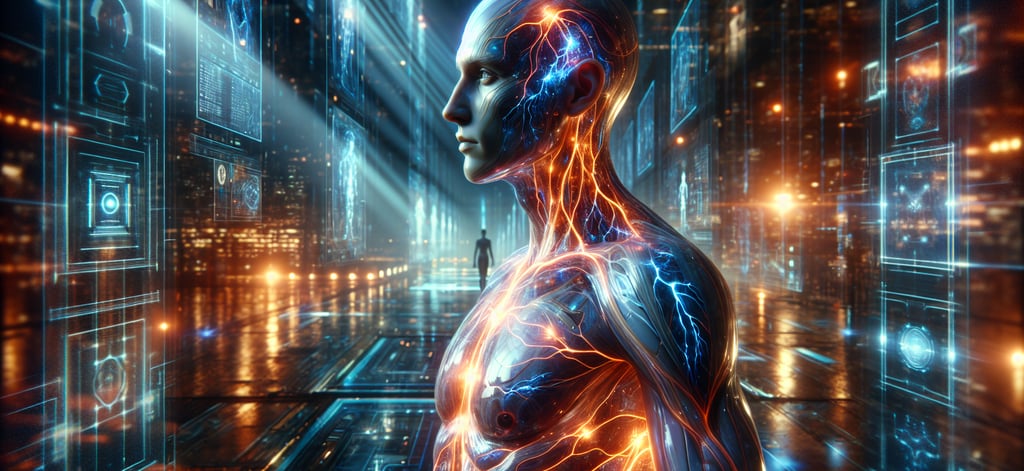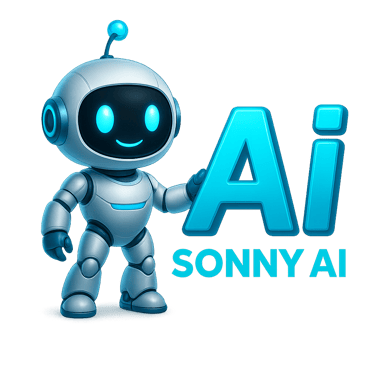AI Automation and Its Impact on Jobs
Explore how AI automation affects jobs, industries, and society, with expert insights and solutions for workforce adaptation and inclusive growth.
7/22/20255 min read


AI Automation And Its Impact On Jobs
AI-driven automation is reshaping the labor market by affecting jobs with routine and repetitive tasks, especially in manufacturing, retail, and administrative roles. This article examines which industries are most vulnerable, the economic and social consequences of job displacement, and insights from recent research on AI's impact. It also explores practical solutions like workforce reskilling and policy strategies to ensure inclusive growth and ethical AI adoption. Understanding these dynamics is essential for professionals, policymakers, and business leaders navigating the evolving workforce landscape.
Jobs and Industries Most Vulnerable to AI-Driven Automation AI-driven automation tends to impact jobs characterized by routine, repetitive, and manual tasks that can be clearly defined and standardized. Industries historically reliant on such tasks have faced the most vulnerability, with manufacturing, retail, and administrative roles leading the list. In manufacturing, tasks such as assembly line work or quality control can be automated through robotics and computer vision, improving efficiency but reducing the demand for manual labor. Retail similarly sees automation through self-checkout systems and inventory management powered by AI. Administrative roles including data entry, scheduling, and basic customer support have increasingly been supplemented or replaced by AI-powered software capable of handling large volumes of standardized information. These roles involve predictable workflows that AI excels at automating, leading to significant shifts in employment patterns.
Emerging AI applications increasingly affect professional sectors that traditionally required specialized knowledge, such as legal and medical fields. For example, AI systems can now assist in contract analysis, legal research, and document review, reducing the time lawyers spend on routine tasks. In medicine, AI supports diagnostics by analyzing imaging or patient data, though the nuanced judgment of medical professionals remains critical. While these advancements suggest a threat to certain tasks within professional roles, the overall vulnerability remains moderated by the complexity and need for human insight. It is important to note that while AI can replace specific tasks, entire jobs often include a blend of tasks some automatable and others not—hence full job displacement is not always inevitable. Moreover, new roles emerge that require managing, interpreting, and augmenting AI systems, shifting labor demand rather than simply eliminating it. The pattern indicates a nuanced impact where jobs involving predictable, repetitive components are most at risk, while those requiring creativity, complex interpersonal interaction, and problem-solving often remain more secure.
Economic and Social Consequences of AI-Driven Job Replacement The increasing adoption of AI in automating workplace tasks brings significant economic and social consequences. On employment rates, AI can displace specific job categories, particularly those involving repetitive tasks, potentially resulting in short-term job losses or labor market shifts. However, the net effect on total employment remains debated; some argue AI also creates new jobs and industries, though often requiring different skills. Income inequality is a central concern, as automation may disproportionately affect lower- and middle-income workers in routine occupations, while higher-skilled workers who develop or manage AI technologies may accrue greater economic gains.
This dynamic risks widening income and wealth gaps unless mitigated by policy interventions or inclusive economic growth. Workforce skill gaps emerge as another crucial challenge. As AI automates particular tasks, the demand grows for workers skilled in AI development, data analysis, and complex problem-solving. Those lacking access to education or training can face prolonged unemployment or underemployment, exacerbating socioeconomic divides. Beyond economics, mental health impacts also arise from workplace changes.
Job displacement or insecurity can contribute to stress, anxiety, and diminished self-esteem for affected workers. The transformation of job roles may require psychological adaptation to new types of work and collaboration with AI systems, influencing work satisfaction and identity. Societally, shifts in the labor market may influence community dynamics and social mobility. Regions dependent on vulnerable industries might experience economic decline and demographic shifts if no alternative employment opportunities emerge. Conversely, AI integration can spur innovation and productivity, potentially enhancing overall economic growth and social well-being when managed proactively. Balancing these diverse outcomes requires nuanced policy responses that support affected populations and foster inclusive benefits from technological progress.
Current Data and Expert Insights on AI-Driven Job Displacement Recent research and industry reports illuminate the scale and pace of AI's impact on employment. According to McKinsey Global Institute's 2023 report, approximately 15% of the global workforce—or about 400 million workers—could need to switch occupational categories by 2030 due to automation and AI-driven changes in job requirements.
This transition reflects a blend of task automation and evolving labor demand rather than outright job destruction. Gartner's 2024 forecast suggests that by 2027, AI will have automated tasks equivalent to 25% of current job functions across industries, with administrative and repetitive roles most affected. However, Gartner also anticipates net job creation as AI generates new roles in software development, AI system management, and data science. An academic study published in 2022 in the Journal of Economic Perspectives analyzed detailed occupational data and found that jobs involving routine cognitive tasks declined by 12% over the preceding five years in markets with rapid AI adoption. Meanwhile, demand for roles requiring social intelligence and creativity grew by 8%, emphasizing a labor market polarization. A relevant case study is the adoption of AI-driven automation in the customer support division of a large telecommunications company.
Between 2021 and 2023, the company implemented AI chatbots to handle tier-one customer inquiries, reducing human agent workload by 40%. While this led to a modest reduction in entry-level call center jobs, it simultaneously increased demand for AI maintenance specialists and customer experience analysts, illustrating both displacement and job creation aspects of AI integration. These data points reflect a nuanced picture: AI accelerates changes in job content and workforce composition rather than causing abrupt mass unemployment, highlighting the importance of adaptation and reskilling strategies as key responses.
Solutions and Adaptations to AI-Driven Labor Market Changes Addressing the challenges posed by AI automation requires multifaceted solutions that balance innovation with social equity. Workforce reskilling and lifelong learning initiatives are critical to equip workers with skills relevant to evolving job demands, particularly in digital literacy, AI system management, and complex problem-solving. Governments, educational institutions, and employers play pivotal roles in providing accessible training programs that match labor market needs.
Policy interventions might include incentives for companies to invest in human capital alongside automation technologies and safety nets for displaced workers, such as wage subsidies or enhanced unemployment benefits. Universal basic income (UBI) has emerged as a debated proposal to provide financial security amidst job transitions, though it remains controversial regarding feasibility and effects on work incentives.
Societies can prepare by fostering adaptable labor markets and inclusive economic policies that minimize disparities exacerbated by AI. This includes supporting small businesses and industries that complement automated tasks, promoting entrepreneurship, and encouraging innovation ecosystems that generate diverse employment opportunities. Moreover, ethical and regulatory frameworks are needed to guide AI development in ways that prioritize human welfare, transparency, and fairness. Collaboration among stakeholders—including governments, industry leaders, labor organizations, and civil society—is essential to design policies that ensure the benefits of AI are broadly shared.
Ultimately, proactive strategies emphasizing education, social protection, and inclusive growth can help societies harness AI's potential for productivity gains while mitigating adverse effects on workers and communities.
AI-driven automation is reshaping the labor market by targeting routine, repetitive tasks across various industries such as manufacturing, retail, and administrative roles. While it displaces certain jobs, it also creates new roles, especially in AI management and complex problem-solving fields. Economic and social impacts include job displacement, income inequality, and mental health challenges, necessitating comprehensive policy and workforce strategies. Data from recent research highlight the nuanced nature of AI's impact, emphasizing the importance of adaptation through reskilling and inclusive growth measures. Effective responses involve multifaceted solutions including workforce training, supportive policies, ethical AI development, and broad stakeholder collaboration to ensure equitable benefits from AI integration.


